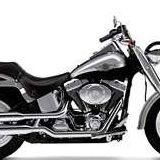Michael L Shackelford
age ~69
from Neosho, MO
- Also known as:
-
- Michael Loren Shackelford
- Mi Chael Shackelford
- Michael L Shackleford
- Mike L Shackelford
- Michelle L Shackelford
- Michell L Shackelford
- Michael L Shackellford
- Michael L Shackelfor
Michael Shackelford Phones & Addresses
- Neosho, MO
- 1827 Hickory Hills Dr, Joplin, MO 64801 • 4174378469
- Republic, MO
- Emporia, KS
- 1827 Hickory Hills Dr, Joplin, MO 64801
Us Patents
-
Container Transport Apparatus For Use In Manufacturing Operations And Method Thereof
view source -
US Patent:7011204, Mar 14, 2006
-
Filed:Oct 31, 2003
-
Appl. No.:10/699621
-
Inventors:Michael L. Shackelford - Joplin MO, US
Donald W. Sonntag - Carl Junction MO, US -
Assignee:Reagent Chemical & Research, Inc. - Ringoes NJ
-
International Classification:B65G 47/24
-
US Classification:198409, 1984864
-
Abstract:A transport assembly and method for containers includes an actuator arm coupled to the drive shaft of a motor and extending radially therefrom so as to be driven between two angular positions. A load arm carries a transport head that releasably engages a selected container at a first station. The load arm is coupled to the actuator arm and is driven in conjunction with a constraining mount that controls its motion. The transport head can grip the container such as with a vacuum. The transport head lifts the container from a first station, moves it to a desired location and places it in a second station. A cam-driven plunger assembly is also shown and operates to seat the container in the second station. The method includes steps performed by this structure, and the application of a seating force to mate a container in the second station.
-
Container Transport And Organizing Apparatus For Use In Manufacturing Operations And Method Thereof
view source -
US Patent:7222719, May 29, 2007
-
Filed:Oct 31, 2003
-
Appl. No.:10/699622
-
Inventors:Michael L. Shackelford - Joplin MO, US
Donald W. Sonntag - Carl Junction MO, US -
Assignee:Reagent Chemical & Research, Inc. - Ringoes NJ
-
International Classification:B65G 47/30
-
US Classification:1984592, 198443, 198453
-
Abstract:An apparatus and method for transporting containers to be processed in a manufacturing operation includes a transfer assembly that transfers containers from a load area on an upstream conveyor assembly to a discharge on downstream conveyor assembly for further processing. The upstream conveyor assembly may include longitudinally extending first and second conveyors oriented at an angle to one another. The transfer assembly may include a rotating wheel that picks containers from a chute and moves them, one at a time, to the downstream conveyor assembly. The downstream conveyor assembly may be in the form of an elevator that has bays that are sized to receive individual containers. The bays are formed by vanes on a moving belt. The method includes steps inherent in the structure, including receiving a bulk supply of containers, moving them horizontally, columnizing them into a single file, elevating them and thereafter discharging them.
-
Valve Assembly And Dispensing System
view source -
US Patent:20190301915, Oct 3, 2019
-
Filed:Mar 27, 2018
-
Appl. No.:15/937183
-
Inventors:- Ringoes NJ, US
Michael L. Shackelford - Joplin MO, US
Howard A. Vanfleet - Duenweg MO, US -
International Classification:G01F 11/38
G01F 15/00 -
Abstract:An improved valve assembly having a material inlet, a metering chamber and a port. A valve element reciprocates within a valve passageway, such that in a first condition, a flow path is created for material to flow from the inlet to the metering chamber and the valve element forms a metal-to-metal seal of the flow path to the discharge port. The valve element then slides to the second condition, to unseal the passageway to the discharge port, and forms a metal-to-metal seal of the flow path to the inlet. A piston forces the material out of the metering chamber, and because the flow path to the discharge port is unsealed and the flow path to the inlet is sealed, the material is directed from the metering chamber, to the discharge port, where it can be dispensed as desired.
Classmates

Michael Shackelford
view sourceSchools:
Honey Creek Elementary School Milwaukee WI 1994-1998
Community:
Felicia Garrison, David Mierzwinski

Michael Shackelford
view sourceSchools:
Murphy Elementary School El Sobrante CA 1971-1976, Juan Crespi Junior High School El Sobrante CA 1976-1977
Community:
Jo Boulware, Patti Hernandez

Michael Shackelford
view sourceSchools:
North Hopkins High School Sulphur Springs TX 1987-1991
Community:
Michael Paprskar, Wanda Derby, Michael Lobb, Cheryl Wilson

Michael Shackelford
view sourceSchools:
East Fairmont High School Fairmont WV 1957-1961
Community:
Tom Newbraugh, Sheila Falls, Kathi Carpenter

Michael Shackelford
view sourceSchools:
Saint Mary School Wayne MI 1991-1996
Community:
Jackie Gaglio, Judith Chirikas, Bryce Johnston, John Moir

Michael Shackelford
view sourceSchools:
Casey-Westfield High School Casey IL 1989-1993
Community:
Stanley Fain

Michael Shackelford
view sourceSchools:
Chipley High School Chipley FL 1979-1983
Community:
Marsha Kent, Russell Doss

Michael Shackelford | Yor...
view sourceGoogleplus

Michael Shackelford
Work:
Delta Medical Center - Director, ED (2009)
Education:
Delta State University - Nursing

Michael Shackelford

Michael Shackelford

Michael Shackelford

Michael Shackelford

Michael Shackelford

Michael Shackelford

Michael Shackelford
Youtube
Myspace
Flickr
Plaxo

Michael G. Shackelford, PLS
view sourceFrankfort, ILVice President, Survey Department Manager at Josep...

Michael Shackelford
view source
Michael Shackelford
view source
Michael Shackelford
view source
Michael Shackelford
view source
Michael Shackelford
view source
Michael Shackelford
view source
Michael Todd Shackelford
view source
Michael Shackelford
view sourceGet Report for Michael L Shackelford from Neosho, MO, age ~69



















